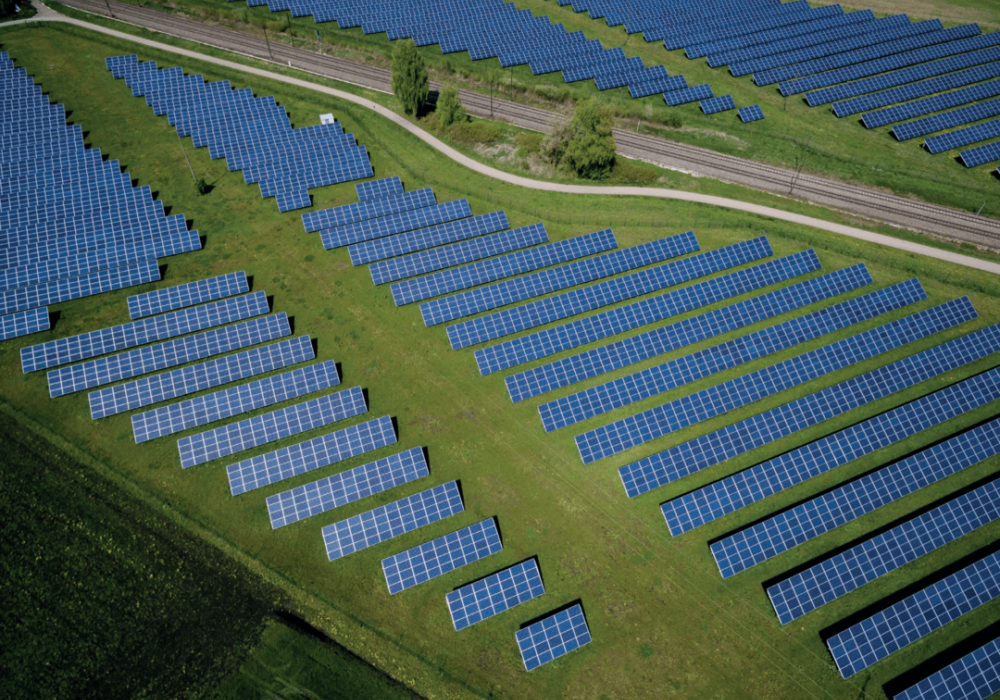Access to clean energy - necessary for human prosperity
Renewable energy is produced by natural resources, such as sunlight, wind, rain, waves, tides and geothermal heat, that are naturally replenished within a few years.
The overall global energy system needs a significant shift to get to net zero Greenhouse Gas (GHG) emissions. The pressing need to conserve water, clean the air and reduce GHG emissions makes the business case for future growth in renewables. The numerous positive crossovers can strengthen the outlook for renewable energy as an attractive investment segment.
The SDGs as an investment theme
All United Nations member states adopted the UN Sustainable Development Goals (SDGs) in 2015. The SDGs represent a shared blueprint for global peace and prosperity towards 2030 - including safeguarding natural habitats, oceans and tackeling climate change. A global transition to renewable energy will result in improved air quality and less water pollution, which in turn benefits the health of humans and the ecosystems that rely on clean air and water.
With the global effort to transition to sustainable societal development, investment opportunities arise when new solutions need financing. Estimates show that realising the SDGs could open a USD 12 trillion market value by 2030, creating 380 million jobs in the process.
Investment potential in renewable energy towards 2050
In 2018, The Intergovernmental Panel on Climate Change (IPPC) issued a report on the pathway to keep global temperatures below 1.5 degrees Celsius. The rise of renewables is the single common denominator of a wide range of leading forecasting and scenario models towards 2050. While the various scenarios and models vary in means of reaching GHG emission mitigation and adaptation, there is consensus around the anticipated increase of solar and wind energy. This partly relates to unprecedented cost reductions in the unsubsidised levelised cost of energy in wind and solar power. Technology efficiency, reasonable energy storage, economies of scale, learning curves and more stable and mature market developments all accelerate the demand.
The Paris Agreement commitments of all UN nations have already contributed to shifting financial flows towards climate mitigation and adaptation measures. In the coming decades, the scale of such investments is expected to increase drastically.
Facts and figures
13%
of the world’s population do not have access to electricity
28%
of renewables in global electricity in Q1 2020
11%
of global primary energy came from renewables in 2019
56%
increase in global offshore wind capacity from 2019-2020
$501.3bn
was invested in low-carbon energy transition in 2020, up from $458.6 bn in 2019
$303.5bn
was invested in global renewable energy capacity in 2020
Sub themes
This whitepaper focuses on two central sub-themes that lay the foundation of successful expansion of renewable energy.
Renewable energy technologies
The most common renewable energy sources are wind, solar and hydro. Wind energy is one of the fastest-growing renewable energy technologies, while solar energy is the most abundant and accessible energy resource on Earth. A cost reduction from lower prices in system components, higher efficiency, and matured industries on both the supply and demand side has made both solar and wind energy economically viable. Hence, the technologies have become commercially available in markets across the globe.
Hydropower is one of the most cost-effective methods of producing electricity. Small-scale or micro hydropower generates energy with minimal interference with a river’s natural water flow. This is generally perceived as more environmentally friendly because it causes less methane emission from biodegrading submerged vegetation and less stress on biodiversity and surrounding ecosystems.
Other renewable energy sources are bioenergy, geothermal energy and ocean energy. Bioenergy is the combustion of biological materials. Geothermal is derived from heated water or steam from within the sub-surface of the Earth. Ocean energy is premature in the sense that it is not yet commercially available. It refers to wave energy, tidal energy by dams or barrier construction, tidal-current or underwater turbines that turn with the tidal flows, salinity gradient energy that exploits variations in salt concentration or ocean thermal energy conversion that utilises temperature differences.
Energy storage and distribution
Energy storage costs have declined across most storage technologies, especially for short-term storage. Long-duration energy storage technologies are attractive, but unfortunately in various stages of technical maturity rates and degrees of commercialisation.
A major source of concern with mainstream renewable energy is intermittency. Wind and solar power can only be generated when sunlight or wind is present. A stable power grid with sufficient backup storage can prevent grid outages. Smart grids are designed to optimise the electricity supply network through digital monitoring.
Distributed Energy Systems (DES) amplify a dynamic system which can shave peak loads off a centralised grid. Over-dimensioned grids are built to deliver peak energy demand, which is expensive. Improved energy management, locally produced renewables, storage, monitoring and control solutions can help deliver a more stable and flexible grid.
Energy access to remote areas is another significant advantage of DES. We can gain energy independence without investing in a massive transmission line upfront. A competitive advantage can be expected in cost-effectiveness, rapid installation, less material use, and a reasonable operational cost due to the low price of renewables.
